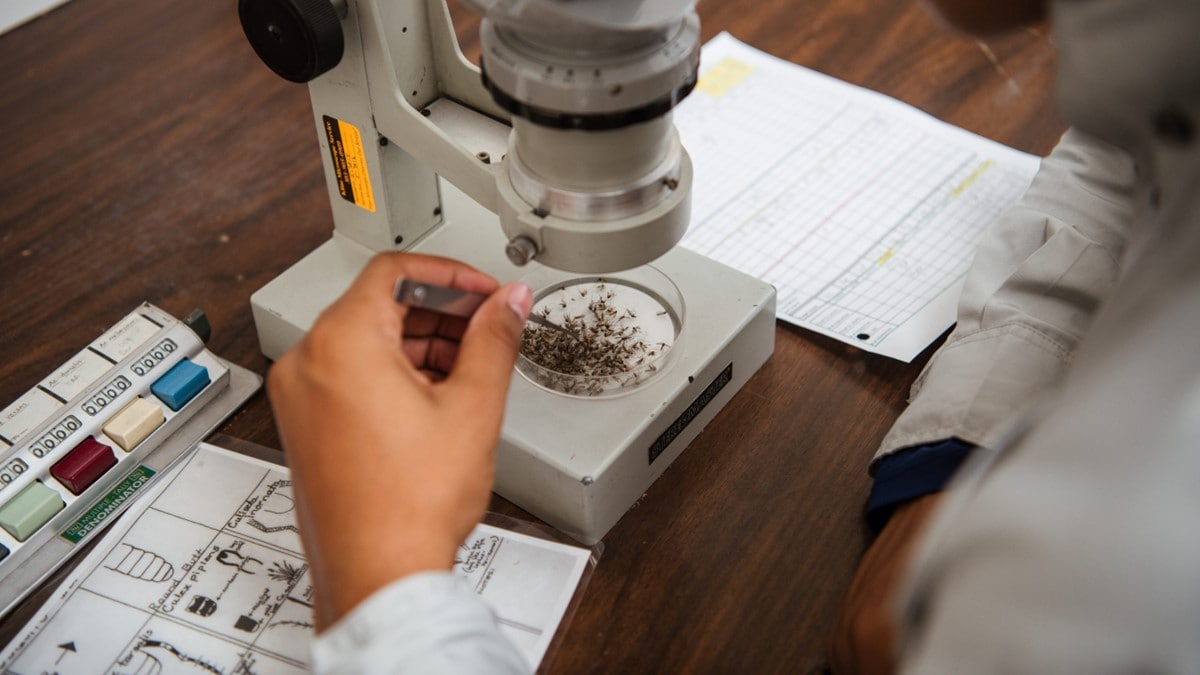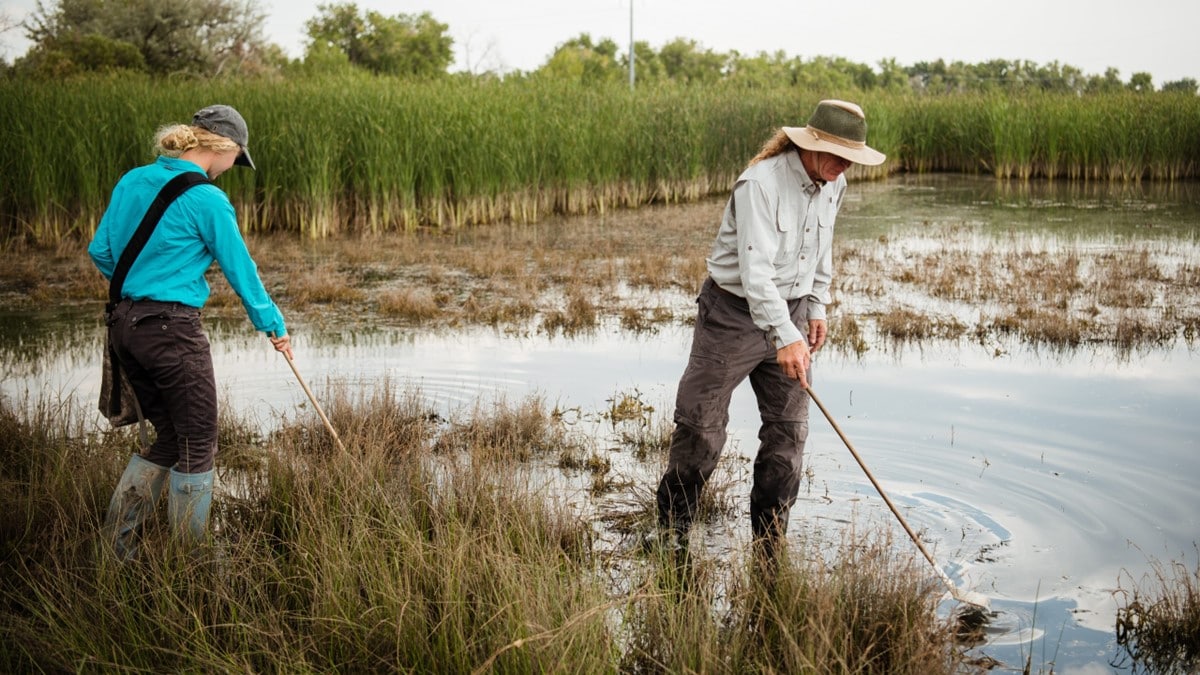At a glance
- Local governments and mosquito control districts develop mosquito control plans by using an integrated mosquito management (IMM) approach.
- IMM uses a combination of methods to prevent and control both nuisance mosquitoes and mosquitoes that spread viruses like West Nile and dengue.

Overview
Professionals from local government departments and mosquito control districts develop mosquito control plans by using an IMM approach, also called integrated vector management. Mosquito control plans include controlling mosquito populations before people start getting sick with a virus spread by mosquitoes.
IMM uses methods to control mosquitoes based on an understanding of mosquito biology, the mosquito life cycle, and the way mosquitoes spread viruses. The methods used, when followed correctly, are safe and have been scientifically proven to reduce mosquito populations.
The basic components of IMM include surveillance, source reduction, control of all mosquito life stages, insecticide resistance testing, public education, community involvement, and evaluation of actions taken.

Surveillance
Professionals monitor mosquitoes, pathogens, and host animals like birds to understand what types and numbers of mosquitoes are in an area and if they are infected with pathogens. To gather this information, mosquito control experts conduct surveillance.
Surveillance activities can include:
- Finding and monitoring places where mosquitoes lay eggs. The larvae that hatch from eggs are found in the same places.
- Tracking mosquito populations and the viruses they may be spreading.
- Monitoring birds to gather data on bird mortality and exposure to West Nile virus.
- Determining if Environmental Protection Agency (EPA)-registered insecticides will be effective.
These activities help professionals determine if, when, and where control activities are needed to manage mosquito populations before people start getting sick. If professionals discover that local mosquitoes are spreading viruses, they start implementing other activities identified in their mosquito control plans.
Systems for surveillance
CDC and state health departments work together to conduct arboviral disease and mosquito surveillance. CDC's surveillance systems include ArboNET. Public health officials and mosquito control professionals collect data and submit it to CDC.
Source reduction
Professionals eliminate as many oviposition sites as possible to reduce the sources of mosquitoes. Reducing mosquito oviposition sites can help minimize the use of insecticides.
Source reduction activities can include:
- Organizing community-wide cleanup drives to remove standing water and dispose of any containers that can hold water.
- Modifying habitats, such as regrading drainage ditches, so water drains quickly and does not accumulate as standing water.
- Managing water drainage systems like culverts, storm drains, or roadside ditches.
- Impounding and open water marsh management for coastal nuisance species.
Control of larvae and pupae
Source reduction can eliminate many oviposition sites. However, larvicides are used when oviposition sites cannot be eliminated or modified to prevent producing mosquitoes.
- Physical controls such as screens on rain barrels
- Mechanical controls such as such as using acoustic energy to kill larvae
- Bacterial larvicides
- Bacillus thuringiensis subspecies israelensis (Bti)
- Lysinibacillus sphaericus
- Spinosad
- Insect growth regulators
- Oils and films
Control of adult mosquitoes
Adult mosquitoes can be controlled with a variety of adulticides. Mosquito control professionals select the appropriate adulticide based surveillance data. In addition, professionals test for insecticide resistance to ensure that the selected adulticide will kill mosquitoes in an area. Commonly used adulticides include:
- Pyrethrins/Pyrethroids
- Organophosphates
Insecticide resistance testing
The use of insecticides to kill mosquitoes that spread pathogens is part of an IMM program. Over time and repeated use, insecticide resistance can occur in mosquito populations. Insecticide resistance is an overall reduction in the ability of an insecticide to kill mosquitoes.
Learn more about the CDC bottle bioassay
Monitor control programs
To make sure that mosquito control activities are working, professionals monitor the effectiveness of their efforts to control both larvae, pupae, and adult mosquitoes. For example, if an insecticide did not work as well as predicted, professionals may conduct additional studies on insecticide resistance or evaluate the equipment used to apply insecticides.
